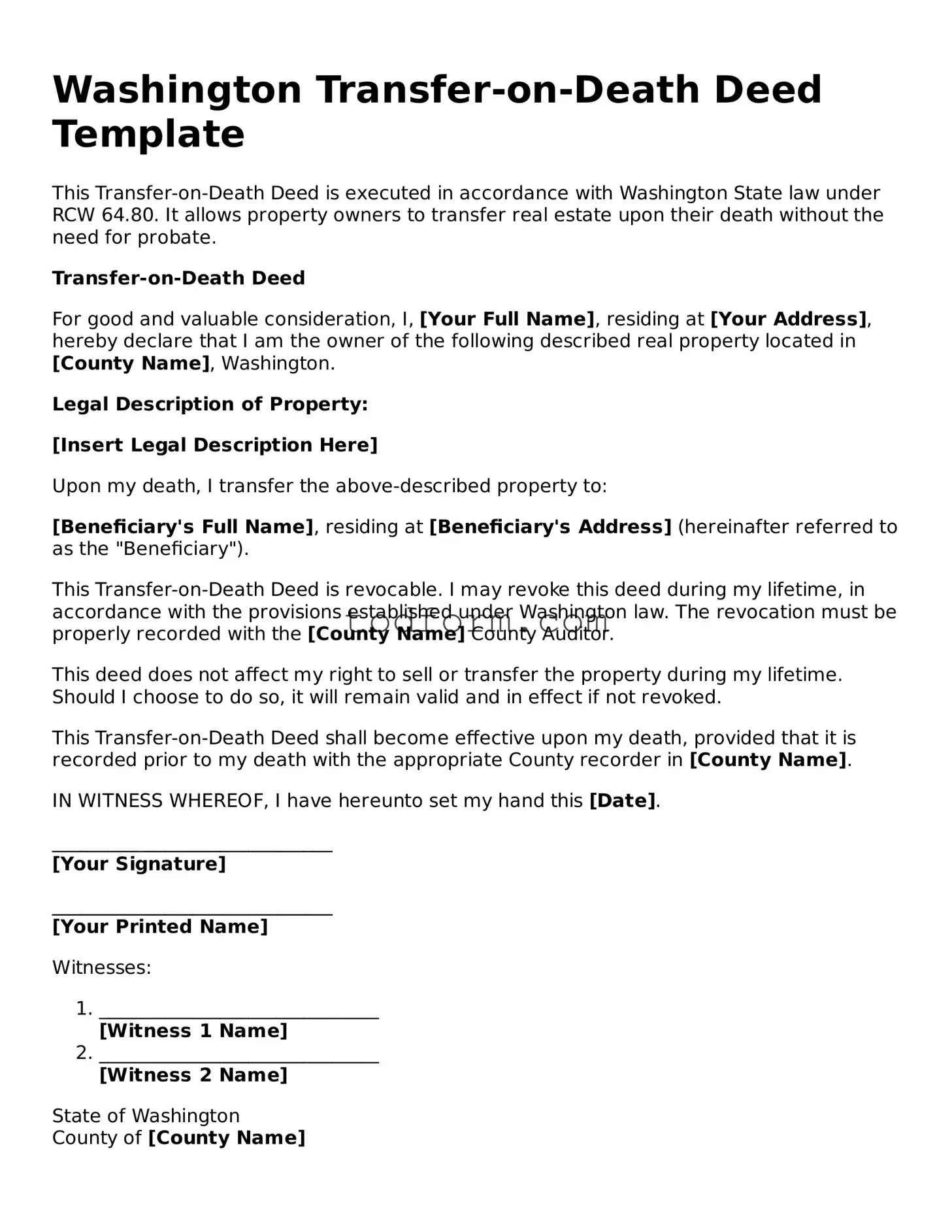The Washington Transfer-on-Death Deed (TOD) is similar to a traditional will, which outlines how a person's assets will be distributed after their death. Both documents serve the purpose of transferring property, but a will typically goes through probate, a legal process that can be lengthy and costly. In contrast, a TOD deed allows property to pass directly to the designated beneficiary without the need for probate, providing a more efficient transfer of assets upon the owner's death.
Another document comparable to the TOD deed is a revocable living trust. Like the TOD deed, a living trust allows for the seamless transfer of assets to beneficiaries without probate. However, a living trust requires the individual to transfer ownership of their assets into the trust during their lifetime. This can involve more complexity and administrative work than simply executing a TOD deed, which only requires the deed to be recorded with the county.
A durable power of attorney shares similarities with the TOD deed in that both documents involve the management of assets. A durable power of attorney allows an individual to designate someone else to make financial decisions on their behalf if they become incapacitated. While the TOD deed focuses on the transfer of property upon death, the durable power of attorney is concerned with managing assets during the individual’s lifetime, highlighting the importance of planning for both scenarios.
The beneficiary designation form used for bank accounts and retirement plans is another document akin to the TOD deed. Both documents allow individuals to name beneficiaries who will receive assets directly upon death, avoiding probate. However, beneficiary designation forms are limited to specific types of accounts, whereas the TOD deed can be used for real estate, making it a more versatile tool for property transfer.
A life estate deed is also similar to the TOD deed, as it allows for the transfer of property while retaining certain rights. In a life estate, the original owner retains the right to live in or use the property during their lifetime, with the property passing to the designated beneficiary after their death. While both documents facilitate the transfer of property, a life estate deed complicates matters by introducing the concept of retained rights, which can affect how the property is managed during the owner’s lifetime.
A joint tenancy deed is another document that bears resemblance to the TOD deed. In a joint tenancy, two or more individuals own property together, and upon the death of one owner, the surviving owner(s) automatically inherit the deceased’s share. This right of survivorship is similar to the direct transfer feature of the TOD deed. However, joint tenancy can create complications, such as potential disputes among co-owners, while the TOD deed allows for a more straightforward transfer to a specific individual.
A quitclaim deed can also be compared to the TOD deed, as both documents are used to transfer property ownership. A quitclaim deed allows an owner to transfer their interest in a property without making any guarantees about the title. While a quitclaim deed can be used during a person’s lifetime, the TOD deed specifically addresses the transfer of property upon death, offering a clearer and more intentional approach to estate planning.
The last will and testament is another important document that is similar to the TOD deed. Both serve the purpose of transferring property upon death, but a will requires probate to validate and execute. The TOD deed, on the other hand, allows for a more immediate transfer of property to the beneficiary without the delays and expenses associated with the probate process. This makes the TOD deed a more efficient option for many individuals looking to simplify their estate planning.
Finally, a family limited partnership agreement can be likened to the TOD deed in terms of asset management and transfer. This type of agreement allows family members to pool their resources and manage assets collectively while providing a mechanism for transferring ownership interests to heirs. While both documents aim to facilitate the transfer of assets, a family limited partnership often involves more complex tax and legal considerations compared to the straightforward nature of a TOD deed.
